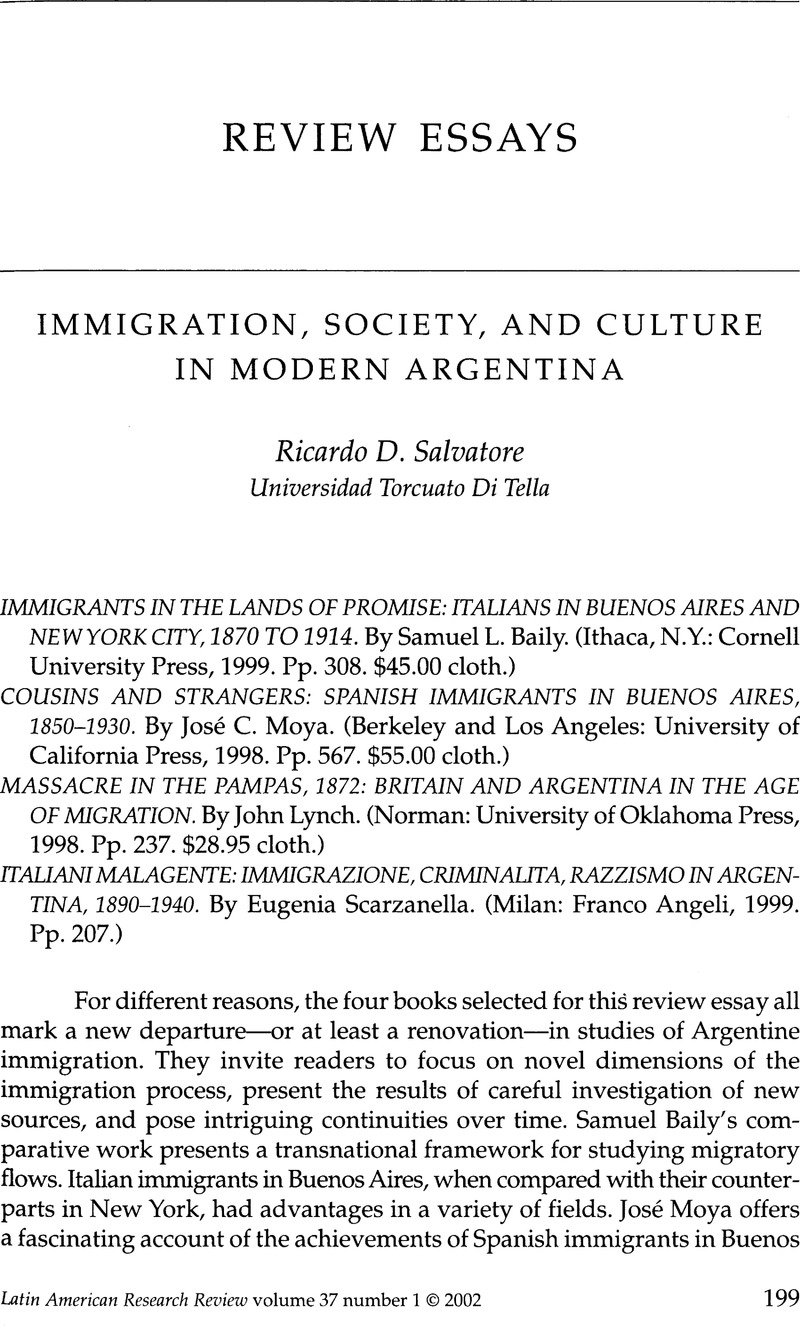No CrossRef data available.
Article contents
Immigration, Society, and Culture in Modern Argentina
Review products
Published online by Cambridge University Press: 05 October 2022
Abstract

- Type
- Review Essays
- Information
- Copyright
- Copyright © 2002 by the University of Texas Press
References
1. See Oscar Terán, Vida intelectual en el Buenos Aires fin-de-siglo (1880–1910) (Buenos Aires: Fondo de Cultura Económica, 2000).
2. See Dudley Baines, Migration in a Mature Economy: Emigration and Internal Migration in England and Wales, 1861–1901 (Cambridge: Cambridge University Press, 1985).
3. The emergence of scientific racism associated with the new theories of evolution and degeneracy and its diffusion among “the mechanics” of the British Isles probably influenced the reception accorded the MacDonell report.
4. A similar perspective can be found in R. D. Salvatore, “Positivist Criminology and State Formation in Modern Argentina (1890–1940),” in Criminals and Their Scientists, edited by Peter Becker and Richard Wetzett (Cambridge University Press, forthcoming).
5. Elsewhere, I have suggested that criminologists' vision of the tenuous lines dividing the world of crime from the world of work can be viewed as an “interpretive grid” for understanding better the cultural challenges of an export economy subjected to severe labor turnover and cyclical instability. See R. D. Salvatore, “Penitentiaries, Visions of Class, and Export Economies: Brazil and Argentina Compared,” in The Birth of the Penitentiary in Latin America, edited by Ricardo D. Salvatore and Carlos Aguirre (Austin: University of Texas Press, 1996), 194–223.




